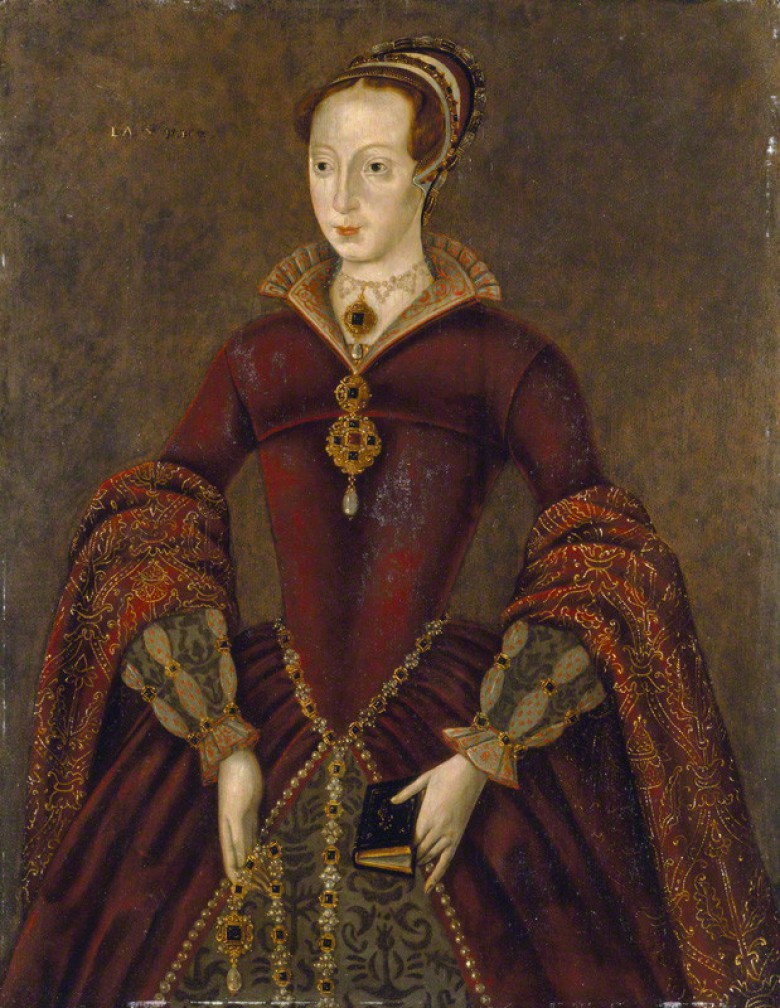9th July 2018
Today in 1553, Jane Grey was informed that she was to be queen. Her cousin, Jane Seymour’s son Edward VI, had died only three days earlier at the age of fifteen. In his will he named Jane Grey as his successor, passing over his sisters Mary and Elizabeth.
Jane was the daughter of Frances Brandon and Henry Grey. Her royal blood came from Frances, whose mother was Mary Tudor – the younger sister of Henry VIII.
When Jane heard the news of her new position, she is said to have wept and fallen to the ground, reluctant to accept the crown. But she did eventually agree. Jane was a very dedicated Protestant, as Edward had been. She, like many of her religion, feared what would happen if the Catholic Mary became queen. Perhaps Jane took this calling to be queen as a sign from God. Despite her initial hesitance, Jane made signs that indicated she would take an active role in being queen – and not just be a puppet for those who had placed her there.
The following day she was publicly proclaimed as queen when news of Edward’s death was officially released. But she and her council received a letter from Mary, reminding them of her claim to the throne and making it clear she would fight for it. It soon became obvious that Mary also had the support of the public – in their eyes, she was the rightful heir as Edward’s sister and daughter to Henry VIII and Katherine of Aragon. To many, Jane was unknown. With this support, Mary would quickly depose Jane and take the throne, being proclaimed queen on 19 July.
Jane was imprisoned in the Tower of London, where she would remain until her execution the following year. She was only sixteen when she died.
In my novel The Last Tudor, I tell the story of Jane Grey and her two sisters, Katherine and Mary. In this scene, I imagine how Jane felt when she was told of Edward’s death and her sudden ascension to the throne – a terrifying prospect, especially when she knew it was not her crown to claim.
“‘The king is dead,’ he says. ‘God save his immortal soul. He named you as his heir. You are queen, God bless and keep your Majesty.’
I look at him blank-faced, and I think, stupidly, that this must all be a dream: the evening sail on the river, the silent house at the end of the long journey, the cold hearth, and now these great men looking at me as if I should know what to do, while they pin a treasonous title on me.
‘What?’ is all I say. ‘What?’
‘You are queen,’ John Dudley repeats. He looks around the room. ‘God save the queen!’
‘God save the queen!’ they all bellow, their mouths wide open, their faces suddenly flushed, as if shouting all together can make a thing true.
‘What?’ I say again. I think I will wake up in a moment and this will seem ridiculous. I will be in my bed at Chelsea. Perhaps I will tell Guildford of my terrible dream and he will laugh.
‘Fetch my wife,’ John Dudley says quietly to the man at the door, and we wait in awkward silence. Nobody meets my gaze but everyone is looking at me. I keep thinking: what do they want me to do? I say a little prayer: ‘Holy Father, tell me what to do. Send me a sign.’”

Image: Lady Jane Grey by unknown artist, c.1590s, National Portrait Gallery (NPG 6804)
